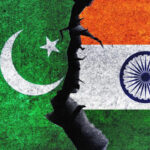External Affairs Minister Jaishankar has face-to-face meeting with Chinese counterpart Wang Yi in Moscow.
After a two and a half-hour meeting that went into the night in Moscow, External Affairs Minister S. Jaishankar and his Chinese counterpart Wang Yi said they agreed on a five-point course of action to disengage and reduce tensions along the Line of Actual Control (LAC), where Indian and Chinese troops have been engaged in a four and a half month long stand-off.
“The two Foreign Ministers agreed that the current situation in the border areas is not in the interests of either side. They agreed, therefore, that the border troops of both sides should continue their dialogue, quickly disengage, maintain proper distance and ease tensions,” said a joint press statement issued after the first face-to-face meeting between the two ministers since the stand-off began.
Also read: LAC standoff | Massive Chinese build-up on north bank of Pangong Tso lake
The five-point plan is: following the consensus between Prime Minister Narendra Modi and President Xi Jinping to “not allow differences to become disputes”, disengaging quickly to ease tensions, abiding by the existing India-China border protocols and avoiding escalatory action, continuing the dialogue between Special Representatives National Security Adviser Ajit Doval and Mr. Wang as well as the other mechanisms and working towards new confidence-building measures (CBMs).
Both sides also issued separate notes detailing their positions, indicating that several differences still remain in their agreement of the situation at the LAC, which has seen violent clashes, deaths of soldiers and gunfire exchanges for the first time in 45 years this summer.
“The immediate task is to ensure a comprehensive disengagement of troops in all the friction areas. That is necessary to prevent any untoward incident in the future. The final disposition of the troop deployment to their permanent posts and the phasing of the process is to be worked out by the military commanders,” government sources said. However, neither the joint statement, nor the respective notes issued specifically spoke of a return to the “Status quo ante” or positions prior to the stand-off in April. Nor do they specifically call on China to retreat from positions it has aggressed on at Pangong Tso, Depsang and other parts of the LAC.
‘Purpose achieved’
A senior official told The Hindu that the purpose of the foreign ministers’ meeting was to agree on the “objectives and principles of disengagement” and that had been achieved. However, much would depend on the militaries following through on the ground, and completing the process “quickly”, returning from the near eyeball to eyeball confrontation at the LAC, to their normal posts, which are 25-30 km apart in many places.
The statement issued by China’s Foreign Ministry on Friday quoted Mr. Wang as saying the relationship was “at the crossroads”. “But as long as the two sides keep moving the relationship in the right direction, there will be no difficulty or challenge that can’t be overcome,” he noted.
His quoted remarks were a contrast from recent statements from China, including following the September 4 meeting between the Defence Ministers in Moscow. He did not blame India for the recent crisis, which has been a point of emphasis in several Chinese statements from the Foreign Ministry and the PLA in recent weeks.
‘China’s stern position’
Mr. Wang reportedly maintained “China’s stern position” on the situation in the border areas, “emphasising that the imperative is to immediately stop provocations such as firing and other dangerous actions that violate the commitments made by the two sides,” the Chinese note added.
Countering the Chinese claims, government sources here said the events of the past few months have “inevitably impacted the bilateral relationship”. In particular, India had made the point that the mobilisation of large number of PLA troops was responsible for the “flashpoints along the LAC.”
“The Chinese side has not provided a credible explanation for this deployment,” the sources said, blaming the “provocative behavior of Chinese frontline troops at numerous incidents” for the violence, while Indian troops had “scrupulously” adhered to protocols.
Military commanders’ meetings in the next few days will chalk out the steps for disengagement more clearly, which the foreign ministers will review before deciding on the course ahead. While border commanders agreed to disengagement procedures in June as well (which made little headway), the government feels that they now have concrete proposals and commitments from Mr. Wang, who is also the State Councillor, thus indicating a policy decision” by Beijing to disengage.
Russia’s initiative
The meeting between the foreign ministers was facilitated and encouraged by Russian Foreign Minister Sergey Lavrov, who hosted them at the SCO meeting. Later, a Russia-India-China lunch set the stage for the bilateral talks on Thursday. It is expected to be followed by Special Representatives’ talks and another meeting of the Working Mechanism on Consultation and Coordination on India-China border affairs.
In November, Mr. Modi and Mr. Xi are expected to attend the G-20 summit in Saudi Arabia, which will be the first time the two leaders, who have not yet spoken to each other during the stand-off, could meet.
India, China agree on 5-point plan to de-escalate LAC stand-off
External Affairs Minister Jaishankar has face-to-face meeting with Chinese counterpart Wang Yi in Moscow.
After a two and a half-hour meeting that went into the night in Moscow, External Affairs Minister S. Jaishankar and his Chinese counterpart Wang Yi said they agreed on a five-point course of action to disengage and reduce tensions along the Line of Actual Control (LAC), where Indian and Chinese troops have been engaged in a four and a half month long stand-off.
“The two Foreign Ministers agreed that the current situation in the border areas is not in the interests of either side. They agreed, therefore, that the border troops of both sides should continue their dialogue, quickly disengage, maintain proper distance and ease tensions,” said a joint press statement issued after the first face-to-face meeting between the two ministers since the stand-off began.
Also read: LAC standoff | Massive Chinese build-up on north bank of Pangong Tso lake
The five-point plan is: following the consensus between Prime Minister Narendra Modi and President Xi Jinping to “not allow differences to become disputes”, disengaging quickly to ease tensions, abiding by the existing India-China border protocols and avoiding escalatory action, continuing the dialogue between Special Representatives National Security Adviser Ajit Doval and Mr. Wang as well as the other mechanisms and working towards new confidence-building measures (CBMs).
Both sides also issued separate notes detailing their positions, indicating that several differences still remain in their agreement of the situation at the LAC, which has seen violent clashes, deaths of soldiers and gunfire exchanges for the first time in 45 years this summer.
“The immediate task is to ensure a comprehensive disengagement of troops in all the friction areas. That is necessary to prevent any untoward incident in the future. The final disposition of the troop deployment to their permanent posts and the phasing of the process is to be worked out by the military commanders,” government sources said. However, neither the joint statement, nor the respective notes issued specifically spoke of a return to the “Status quo ante” or positions prior to the stand-off in April. Nor do they specifically call on China to retreat from positions it has aggressed on at Pangong Tso, Depsang and other parts of the LAC.
‘Purpose achieved’
A senior official told The Hindu that the purpose of the foreign ministers’ meeting was to agree on the “objectives and principles of disengagement” and that had been achieved. However, much would depend on the militaries following through on the ground, and completing the process “quickly”, returning from the near eyeball to eyeball confrontation at the LAC, to their normal posts, which are 25-30 km apart in many places.
The statement issued by China’s Foreign Ministry on Friday quoted Mr. Wang as saying the relationship was “at the crossroads”. “But as long as the two sides keep moving the relationship in the right direction, there will be no difficulty or challenge that can’t be overcome,” he noted.
His quoted remarks were a contrast from recent statements from China, including following the September 4 meeting between the Defence Ministers in Moscow. He did not blame India for the recent crisis, which has been a point of emphasis in several Chinese statements from the Foreign Ministry and the PLA in recent weeks.
‘China’s stern position’
Mr. Wang reportedly maintained “China’s stern position” on the situation in the border areas, “emphasising that the imperative is to immediately stop provocations such as firing and other dangerous actions that violate the commitments made by the two sides,” the Chinese note added.
Countering the Chinese claims, government sources here said the events of the past few months have “inevitably impacted the bilateral relationship”. In particular, India had made the point that the mobilisation of large number of PLA troops was responsible for the “flashpoints along the LAC.”
“The Chinese side has not provided a credible explanation for this deployment,” the sources said, blaming the “provocative behavior of Chinese frontline troops at numerous incidents” for the violence, while Indian troops had “scrupulously” adhered to protocols.
Military commanders’ meetings in the next few days will chalk out the steps for disengagement more clearly, which the foreign ministers will review before deciding on the course ahead. While border commanders agreed to disengagement procedures in June as well (which made little headway), the government feels that they now have concrete proposals and commitments from Mr. Wang, who is also the State Councillor, thus indicating a policy decision” by Beijing to disengage.
Russia’s initiative
The meeting between the foreign ministers was facilitated and encouraged by Russian Foreign Minister Sergey Lavrov, who hosted them at the SCO meeting. Later, a Russia-India-China lunch set the stage for the bilateral talks on Thursday. It is expected to be followed by Special Representatives’ talks and another meeting of the Working Mechanism on Consultation and Coordination on India-China border affairs.
In November, Mr. Modi and Mr. Xi are expected to attend the G-20 summit in Saudi Arabia, which will be the first time the two leaders, who have not yet spoken to each other during the stand-off, could meet.






NO COMMENT